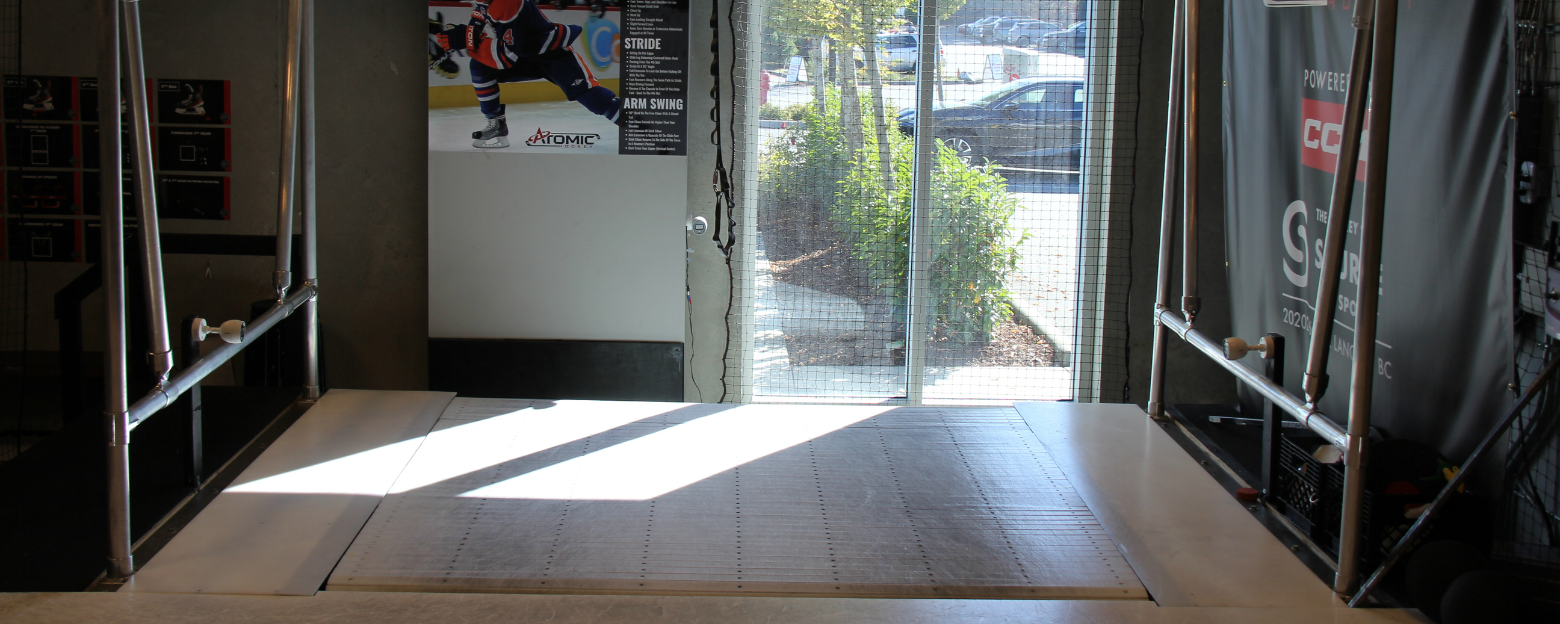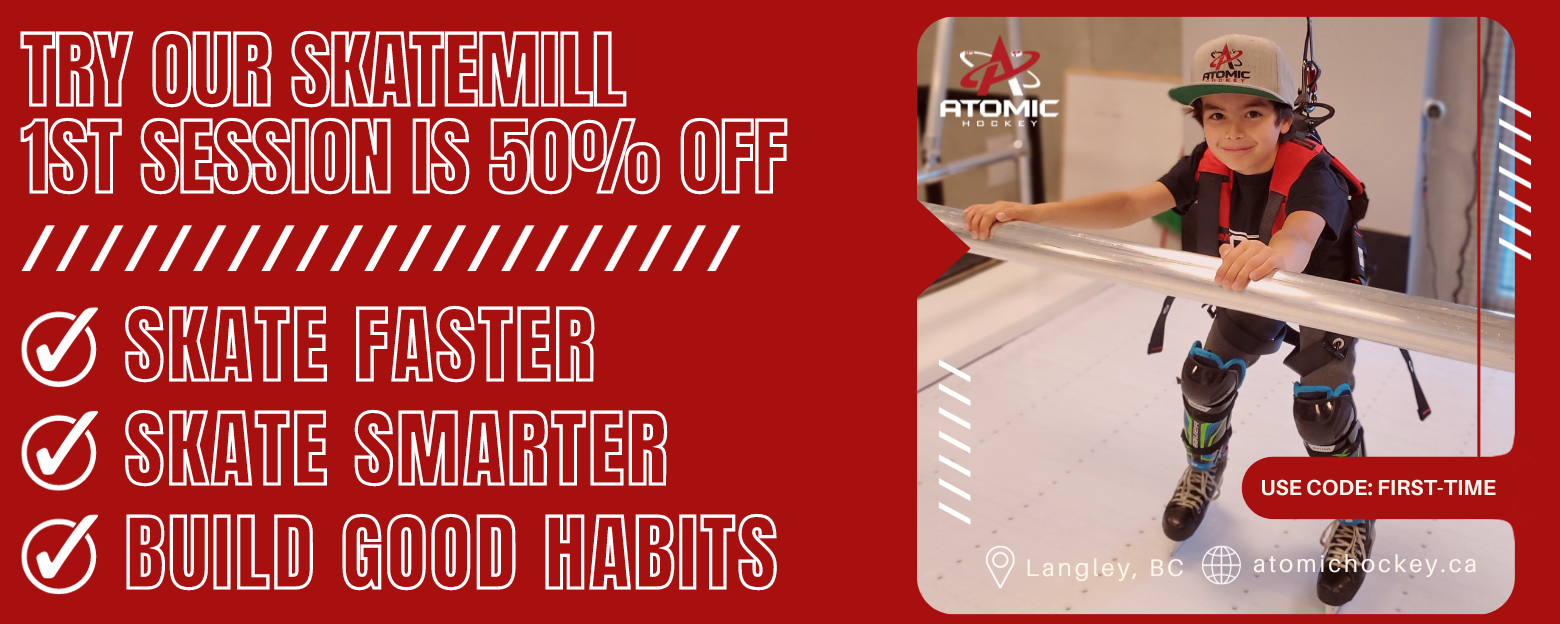Introduction
Skating is the backbone of ice hockey. The ability to glide effortlessly across the ice while maintaining precision and control is the essence of the game. This is where skatemill training comes into play. In this article, we will explore the numerous advantages that skatemill training offers to hockey players at all levels.
Understanding Skatemill Training
Before delving into the benefits, let’s understand what skatemill training entails. Skatemills are sophisticated devices designed to mimic the sensation of skating on ice. Players strap on their skates and glide on a moving belt, much like a treadmill for skating. This technology enables players to work on their skating skills in a controlled environment.
Sections
Click the section below to jump to that section:
1. Improved Skating Technique
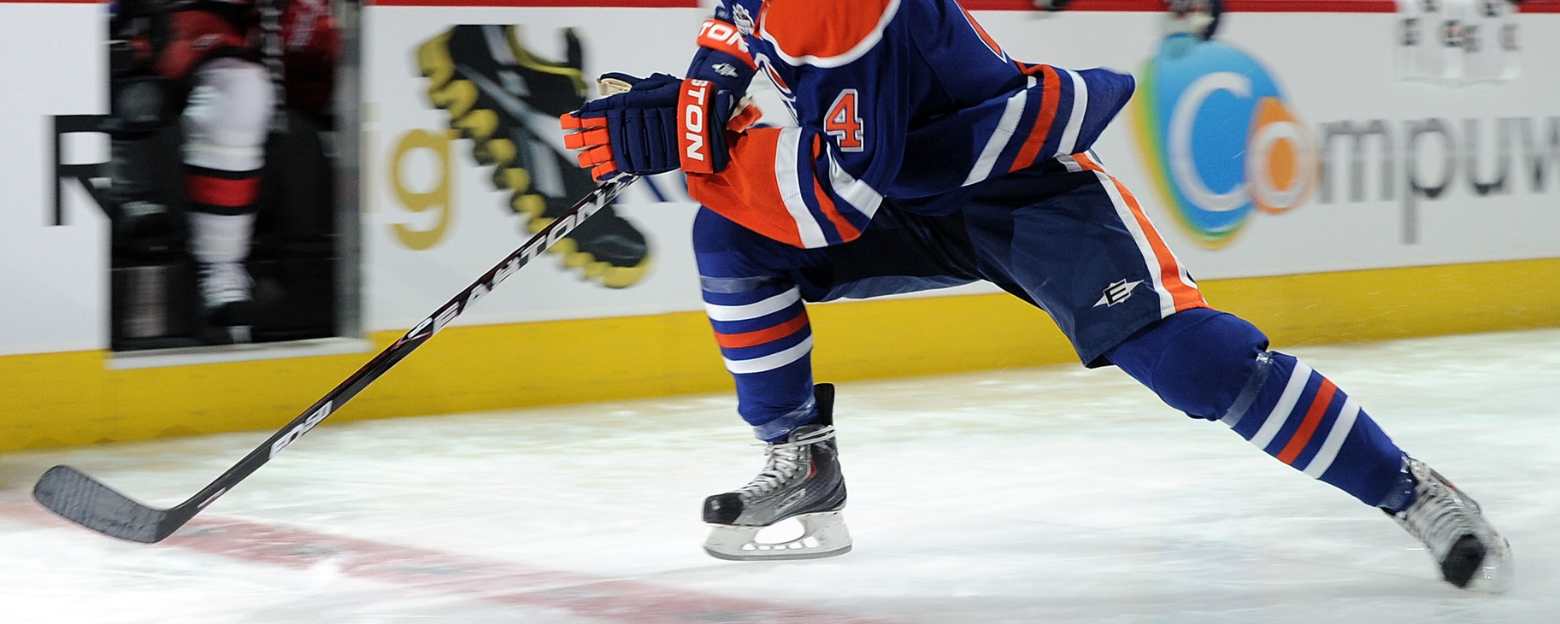
One of the primary benefits of skatemill training is the opportunity to refine skating techniques. Players can focus on their stride, balance, and posture, ensuring that every movement is efficient and effective. This leads to smoother and faster skating on the ice.
Skating is the foundational skill in ice hockey, and honing your technique is essential for becoming a proficient player. Let’s delve into the intricate details of improving your skating technique through skatemill training.
Posture: The Foundation of Effective Skating
Knee Bend (90°-100°): Achieving the ideal knee bend is crucial for balance and power. Bend your knees between 90 and 100 degrees, ensuring they are over your toes, not beyond.
Butt Behind Heels: Maintain a posture that keeps your butt behind your heels. This stance offers stability and facilitates smoother strides.
No Pronation or Supination – Sitting On Flat Edges: Avoid pronation (inward rolling of the foot) or supination (outward rolling). Your feet should sit flat, ensuring even weight distribution.
Alignment of Feet, Knees, Hips, and Shoulders: Keep these body parts in line to optimize your balance and coordination.
Back Flexion/Small Arch: Maintain a slight arch in your lower back while keeping your chest up and behind your knees.
Head Up, Eyes Forward: Keep your head up, eyes looking straight ahead. This position allows you to scan the ice for plays and opponents.
Slight Forward Lean: Lean slightly forward from your ankles, not your waist, to initiate strides with ease.
Engage Inner Core Muscles: Activate your inner core muscles or transverse abdominals throughout your skating motion. This engagement adds stability and power.
Stride: Maximizing Efficiency
Pushing from the 4th Slot: Focus on pushing off from the fourth slot on your skates to generate forward propulsion. The 4th slot is located just in front of the heel.
Stride at a 55° Angle: Your stride should extend at a 55-degree angle behind you for optimal reach and power, it ensures that the 4th slot is engaged with the ice for a longer duration of time for maximum eddiciency.
Full Extension to Lock Out Before Kicking Off: Ensure a full leg extension before kicking off with your toe. This extended position harnesses the energy for an effective stride.
Foot Recovery Along the Same Path as Stride: The path of your recovering foot should mirror that of your stride, minimizing unnecessary lateral movements.
Knee Driving Forward: During the stride, your knee should drive forward before the kick-off, ensuring a fluid and powerful motion.
Recover a Toe Capsule in Front of the Glide Foot: After the stride, recover your foot to a toe capsule in front of the glide foot, preparing for the next stride from the fourth slot.
Arm Swing: The Art of Balance
90° Bend on the Free Elbow: Maintain a 90-degree bend on your free elbow, providing balance and control.
Free Elbow Extends No Higher than Your Shoulder: Keep the free elbow at or below shoulder height to prevent balance disruption.
Full Extension of Stick Elbow: When using a hockey stick, ensure the stick elbow fully extends during the stride.
Arm Extension Mirrors Glide Foot: Coordinate your arm extension with your glide foot, achieving balance and fluidity.
Stick Elbow Returns to the Side of the Torso in a Reverse L Position: After extension, the stick elbow should return to the side of your torso, resembling a reverse L shape.
Don’t Cross Your Zipper (Vertical Center): Maintain alignment by not crossing your zipper (the vertical center of your body). This helps prevent rotational imbalance.
Summary
Mastering the art of skating in ice hockey entails meticulous attention to posture, stride, and arm swing. By focusing on these fundamental aspects during skatemill training, you’ll not only improve your skating technique but also enhance your overall performance on the ice.
Stay committed to refining your skills, and you’ll be well on your way to becoming a more proficient and confident hockey player.
2. Enhanced Endurance
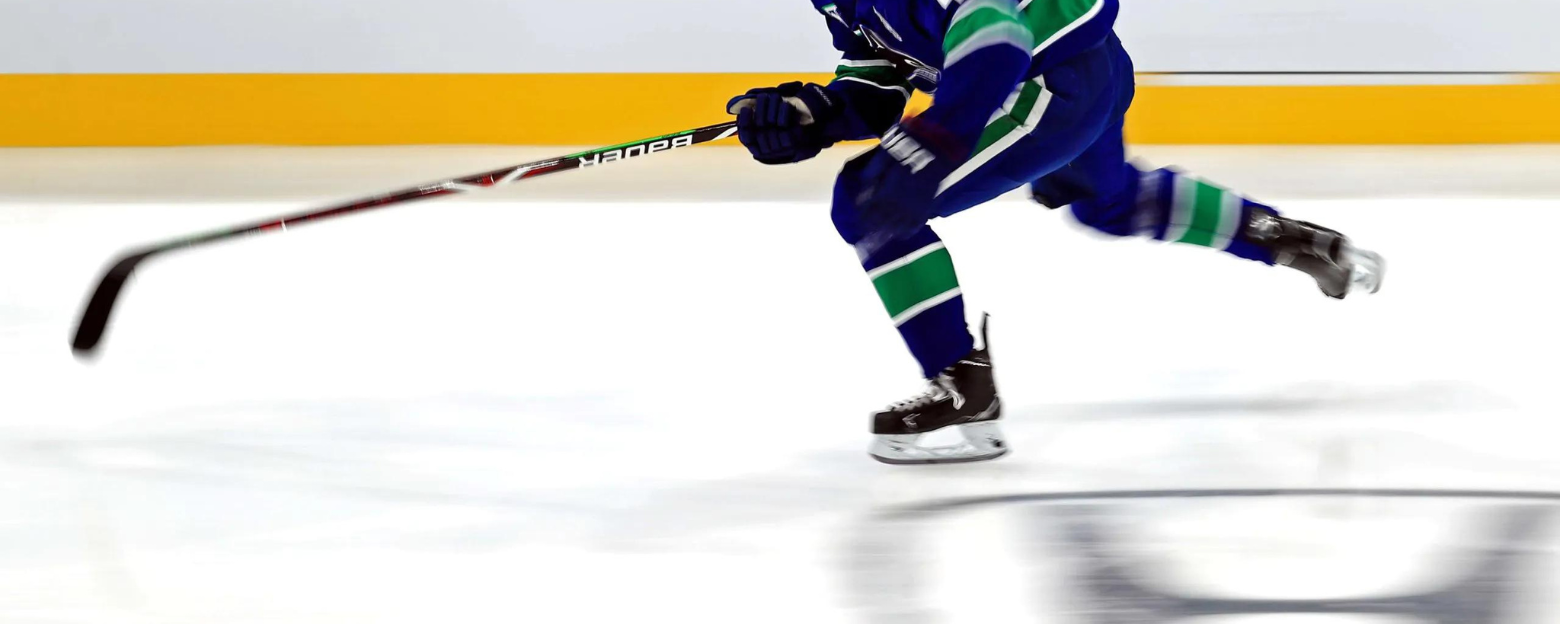
Skatemill training allows players to engage in longer, uninterrupted skating sessions. This helps build endurance, which is crucial for maintaining peak performance throughout a hockey game. Improved endurance means players can exert more effort without tiring quickly.
Endurance is a cornerstone of success in ice hockey. The ability to maintain a high level of performance throughout a game, especially during those critical moments in the third period, can make all the difference. Skatemill training offers a unique platform to enhance your endurance, providing a multitude of benefits that extend beyond the rink.
Cardiovascular Conditioning
One of the primary advantages of skatemill training is the continuous, controlled nature of the exercise. When you step onto the skatemill, you’re in for a steady-state cardiovascular workout. This sustained effort helps improve your heart’s ability to pump oxygen-rich blood to working muscles efficiently. As your cardiovascular system becomes more adept at delivering oxygen, your endurance levels soar.
Muscular Stamina
Ice hockey demands exceptional muscular stamina, as players continuously engage in rapid sprints, pivots, and quick transitions. Skatemill training mimics these movements, allowing you to build specific muscular endurance. Your leg muscles, including the quadriceps, hamstrings, and calves, benefit from the extended time spent on the skatemill. This targeted conditioning translates directly to the ice, where you’ll find yourself better equipped to handle the demands of the game.
Anaerobic Threshold Improvement
The anaerobic threshold is the point at which lactic acid begins to accumulate in your muscles, leading to fatigue. Skatemill training pushes your anaerobic threshold higher. As your body becomes more proficient at managing lactic acid, you’ll experience reduced muscle fatigue and prolonged high-intensity performance. This is invaluable in those clutch moments when you need to dig deep and maintain peak performance.
Mental Toughness
Endurance isn’t just about physical stamina; it’s also a test of mental fortitude. Skatemill training challenges your mental toughness as you push through fatigue, maintaining proper form and technique. This mental conditioning can be equally important in a game, where focus and determination can be the difference-makers in the closing minutes.
Increased Game Time Contribution
When your endurance levels are elevated through skatemill training, you become a more valuable asset to your team. You’ll find yourself not only contributing effectively during regular shifts but also having the energy to make a difference in crucial moments. Coaches appreciate players who can be relied upon in all game situations, and enhanced endurance is a surefire way to earn that trust.
Summary
Endurance is a multifaceted attribute in ice hockey, encompassing both physical and mental components. Skatemill training offers a dynamic means to bolster your endurance, improving cardiovascular fitness, muscular stamina, anaerobic threshold, and mental resilience. As you enhance your endurance through skatemill workouts, you’ll find yourself performing at a higher level for longer durations, ultimately making you a more impactful player on the ice.
3. Greater Speed and Agility
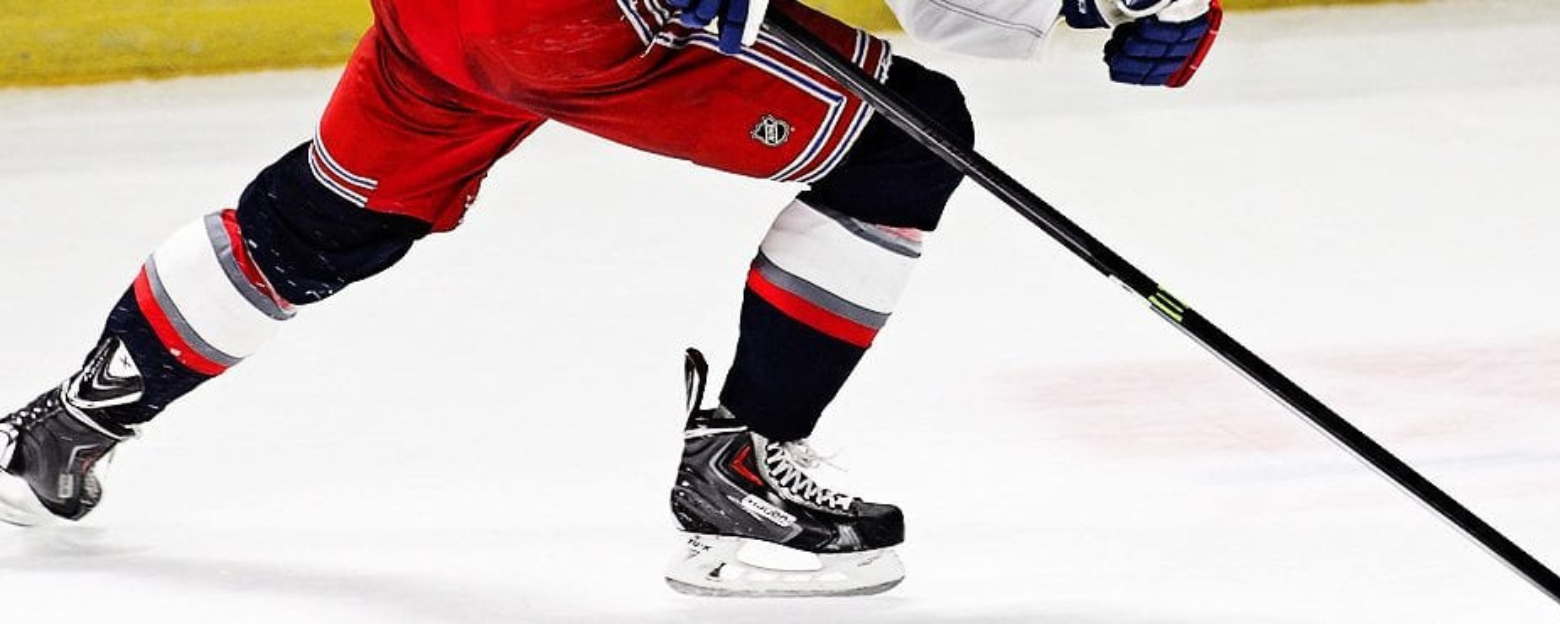
Speed is a game-changer in hockey. Skatemills enable players to work on their acceleration and top-speed skating. By consistently practicing on the skatemill, players can achieve greater velocity on the ice. Additionally, the agility gained through skatemill training allows players to navigate the rink with ease.
In the fast-paced world of ice hockey, speed and agility are indispensable attributes. The ability to accelerate swiftly, change direction with finesse, and outmaneuver opponents can tip the scales in your favor. Skatemill training is a secret weapon for honing these skills, offering a multitude of benefits that directly translate to improved performance on the ice.
Acceleration and Speed
One of the standout advantages of skatemill training is its capacity to enhance acceleration and top-end speed. When you step onto the skatemill, you’re in an environment where consistent, uninterrupted skating is key. This allows you to fine-tune your stride, achieving optimal push-off angles and increasing your power with each step. Over time, this results in significantly improved straight-line speed, enabling you to burst away from opponents or chase down loose pucks more effectively.
Rapid Directional Changes
Hockey is a game of constant change, with players needing to pivot, turn, and cut quickly in response to ever-shifting dynamics on the ice. Skatemill training excels at developing these rapid directional changes. The continuous motion of the skatemill allows you to practice smooth transitions from forward to backward skating, execute crisp crossovers, and perfect tight turns. These skills become invaluable when navigating through tight spaces, avoiding defenders, and maintaining possession of the puck.
Enhanced Agility and Balance
Agility is the art of controlled movement, and skatemill training offers an ideal platform for its cultivation. As you adapt to the skatemill’s motion, you’ll notice a significant improvement in your balance and agility. The constant adjustments required to stay centered on the moving surface develop your core strength and proprioception, helping you maintain stability even during high-speed maneuvers. This newfound agility gives you a crucial edge when jockeying for position, evading checks, and executing quick dekes.
Improved Edge Work
Ice hockey is all about edge work, and skatemill training is an exceptional tool for refining this aspect of your skating. The continuous feedback from the skatemill’s surface allows you to concentrate on perfecting your edges, ensuring that you maximize grip and control. Whether you’re executing tight turns, making quick stops, or battling along the boards, enhanced edge work directly contributes to your effectiveness on the ice.
Summary
In summary, skatemill training is a game-changer for hockey players seeking to elevate their speed and agility. By perfecting your stride, practicing rapid directional changes, enhancing agility and balance, and refining your edge work, you’ll emerge from skatemill workouts as a more dynamic and versatile skater. These skills translate directly to the ice, empowering you to outmaneuver opponents, reach top speed more efficiently, and contribute decisively to your team’s success.
4. Injury Prevention

Proper skating technique not only enhances performance but also reduces the risk of injuries. Skatemill training promotes better balance and body control, which are essential for avoiding awkward falls and collisions on the ice.
In the high-impact world of ice hockey, preventing injuries is paramount for players at every level. The dynamic and physically demanding nature of the sport means that athletes are constantly at risk of various injuries, particularly to the lower body. Skatemill training plays a crucial role in injury prevention by addressing several key aspects of a player’s physical condition.
Lower Body Strength and Stability
A strong lower body is the foundation of injury prevention in hockey. Skatemill training focuses on building lower body strength and stability, particularly in the legs, hips, and core. This strength provides added protection to the joints, ligaments, and muscles that are vulnerable to injury during gameplay. By consistently engaging these muscle groups on the skatemill, players develop greater resilience to withstand physical contact and maintain balance in challenging situations.
Improved Flexibility and Range of Motion
Flexibility and range of motion are essential for preventing strains, pulls, and other soft tissue injuries common in hockey. Skatemill workouts help players achieve a more extensive range of motion in their hips and ankles, allowing for smoother and more controlled movements on the ice. This improved flexibility reduces the risk of overstretching or straining muscles during quick pivots, stops, and acceleration.
Proprioception and Balance
Maintaining balance on the ice is crucial for injury prevention, especially during sudden changes in direction or collisions with other players. Skatemill training hones players’ proprioception—the body’s sense of spatial awareness—and sharpens their balance. As athletes adapt to the skatemill’s motion, they become more adept at staying on their feet, even in challenging scenarios. This translates directly to improved on-ice stability, decreasing the likelihood of falls or awkward landings that can lead to injuries.
Enhanced Core Strength
A strong core is the linchpin of injury prevention. Skatemill workouts engage the core muscles continually, as players must stabilize their bodies while maintaining balance on the moving surface. This consistent activation of the core helps players develop a robust midsection, reducing the risk of lower back injuries and improving overall stability. A strong core also contributes to better posture and mechanics during skating, reducing the risk of strain or injury.
Injury Prevention as a Competitive Advantage
Injury prevention is not merely about staying safe—it’s also a competitive advantage. Players who can consistently take to the ice without injury are more likely to maintain their performance levels and contribute effectively to their teams. By incorporating skatemill training into their routines, hockey players invest in their long-term well-being and improve their prospects for success on the ice.
Summary
In conclusion, skatemill training plays a pivotal role in preventing injuries among hockey players. By building lower body strength, enhancing flexibility, honing proprioception and balance, and strengthening the core, skatemill workouts provide athletes with a competitive edge while reducing the risk of injury. The result is a more resilient and effective player who can consistently perform at their best, season after season.
5. Customized Workouts
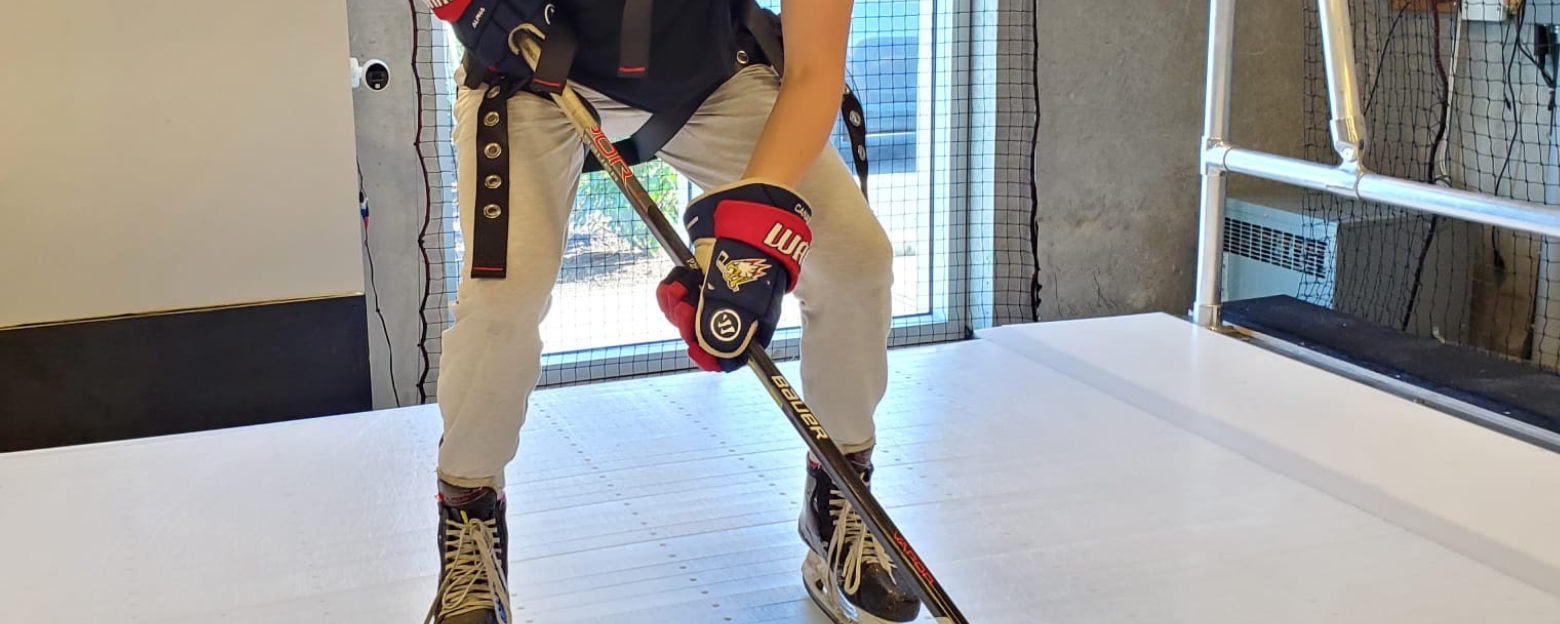
One of the most significant benefits of skatemill training for hockey players is the ability to receive customized workouts tailored to their specific needs and skill levels. Unlike generic training programs, skatemill sessions are designed to address individual strengths and weaknesses, enabling players to optimize their performance on the ice.
Targeted Skill Development
Skatemill training begins with a thorough assessment of a player’s current skillset. Coaches and trainers closely analyze factors such as skating technique, shooting accuracy, stickhandling abilities, and physical conditioning. This comprehensive evaluation helps identify areas that require improvement and allows for the creation of targeted workout plans.
Individualized Training Plans
Based on the assessment results, coaches develop individualized training plans that focus on enhancing each player’s unique skill set. For instance, a player struggling with shooting in-stride may receive specialized drills to improve their continuous movement whilst shooting, while another player aiming to enhance their agility may have exercises that prioritize quick footwork.
Progressive Skill Advancement
The beauty of customized skatemill workouts lies in their progressive nature. As players master specific skills and reach their training goals, the program evolves to introduce new challenges and objectives. This ensures that athletes are constantly pushing their limits and growing as hockey players.
Injury Recovery and Prevention
Customized workouts are invaluable for players returning from injuries. Skatemill training programs can be adapted to accommodate rehabilitation needs while preventing further injury. This personalized approach allows injured players to regain their strength and confidence at their own pace, reducing the risk of reinjury.
Flexibility and Adaptability
Coaches and trainers remain flexible throughout the training process, adjusting workouts as needed based on a player’s progress and feedback. If a player excels in one area but struggles in another, the training plan can be recalibrated to prioritize the necessary improvements.
Goal-Oriented Training
Every skatemill session has a specific goal, whether it’s refining skating technique, increasing shot accuracy, or boosting endurance. This goal-oriented approach ensures that players are continually working toward tangible improvements in their game.
Consistent Monitoring and Feedback
In addition to designing tailored workouts, coaches provide consistent monitoring and feedback during skatemill sessions. They track a player’s performance, offer real-time guidance, and provide constructive feedback to reinforce proper techniques and habits.
Confidence Building
Customized workouts are essential for building a player’s confidence. As they see measurable progress and witness their skills improving over time, athletes gain a newfound belief in their abilities. This confidence can be a game-changer, as it often translates to improved on-ice performance and a competitive edge.
Summary
In conclusion, skatemill training offers hockey players the unique advantage of receiving customized workouts that cater to their specific needs and goals. This personalized approach fosters skill development, enhances injury recovery and prevention, and instills confidence in players, making it an invaluable component of a comprehensive hockey training regimen. By tailoring workouts to individual requirements, skatemill training helps players reach their full potential on the ice and excel in the sport they love.
6. Year-Round Training

One of the outstanding advantages of skatemill training for hockey players is the opportunity for year-round training. In the competitive world of hockey, maintaining and improving one’s skills throughout the entire year is crucial for success. Skatemill training allows players to stay sharp and consistently work on their game, regardless of the season.
Off-Season Development
The off-season is a critical period for players to enhance their skills, build strength, and prepare for the upcoming season. Skatemill training offers a controlled environment where players can focus on their weaknesses and make significant improvements. Whether it’s refining skating technique, increasing shot velocity, or boosting endurance, the off-season is the perfect time to address these aspects of their game.
Continuous Skill Refinement
Hockey is a sport that demands constant skill refinement. Skatemill training provides players with the opportunity to continuously work on their skating, stickhandling, and shooting abilities. The ability to practice these skills year-round ensures that players remain competitive and can adapt to the evolving demands of the game.
Consistent Conditioning
Maintaining physical conditioning is essential for hockey players, and skatemill training plays a vital role in this aspect. Regular skatemill sessions help athletes stay in peak physical condition, which is critical for endurance, agility, and injury prevention. With year-round access to this form of training, players can sustain their conditioning levels and be ready to perform at their best at any time.
Avoiding Skill Regression
One of the challenges hockey players face is skill regression during periods of inactivity. Without regular training, it’s easy to lose the progress made during the season. Skatemill training mitigates this risk by offering a consistent platform for skill development. Players can pick up where they left off and continue building upon their existing abilities.
Competitive Edge
Year-round training with a skatemill provides players with a competitive edge. While others may take breaks or have limited access to ice time, those who commit to consistent training gain a significant advantage. They are better prepared for tryouts, pre-season camps, and the start of the hockey season.
Versatile Training Options
Skatemill training is not limited to traditional ice rinks and can be conducted indoors year-round. This flexibility allows players to access training regardless of weather conditions or rink availability. It’s a convenient and reliable option for those committed to improving their game consistently.
Skill Integration
Year-round training enables players to integrate new skills seamlessly into their game. Rather than trying to master new techniques during the season, players can refine them over time and gradually incorporate them into their on-ice performance.
Summary
In conclusion, year-round skatemill training is a game-changer for hockey players seeking to maintain and elevate their skills throughout the entire year. By providing consistent access to skill development, conditioning, and a competitive edge, skatemill training empowers players to reach their full potential and excel in the sport they love. It is a valuable resource for committed athletes looking to stay at the top of their game, no matter the season.
7. Confidence Boost
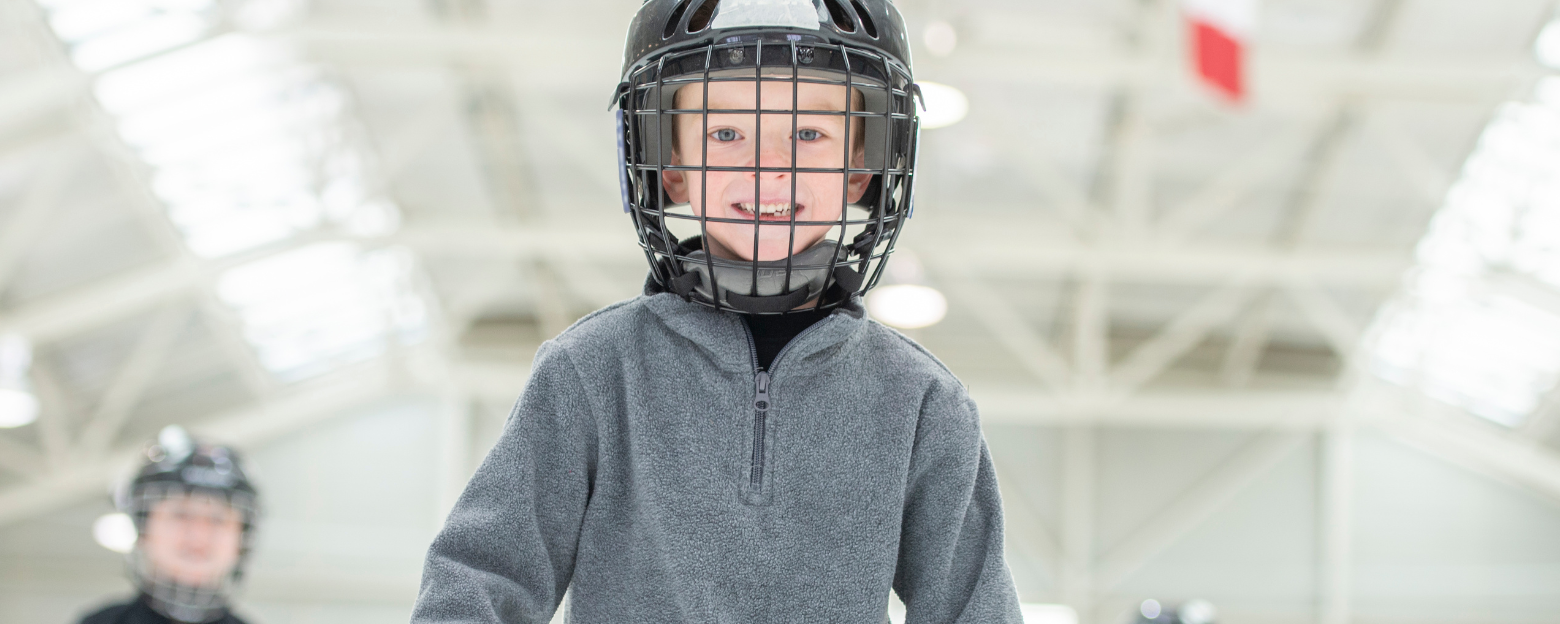
As players refine their skating abilities through skatemill training, they gain confidence in their on-ice performance. This newfound confidence translates to improved gameplay, as players are more willing to take calculated risks and make dynamic plays.
Confidence is an integral component of success in any sport, and hockey is no exception. Skatemill training offers a unique opportunity to boost players’ confidence in various aspects of their game. Here’s how it contributes to building confidence in hockey players:
Improved Skating Proficiency
One of the primary areas where skatemill training enhances confidence is skating proficiency. Skating is the foundation of hockey, and players who feel confident in their ability to skate efficiently have a significant advantage. Skatemill sessions provide a controlled environment for players to work on their stride, balance, and agility. As they see improvements in their skating technique, their self-assurance grows. This newfound confidence translates directly to their performance on the ice during games.
Precision Shooting
Another aspect of skatemill training that boosts confidence is precision shooting. Players can fine-tune their shooting accuracy, power, and technique during skatemill sessions. When they consistently hit their target and score goals with precision, they gain confidence in their shooting abilities. This confidence empowers them to take shots when opportunities arise during games, increasing their likelihood of scoring.
Enhanced Stickhandling
Effective stickhandling is essential for maneuvering the puck and maintaining possession. Skatemill training allows players to work on their stickhandling skills in a controlled setting. As they become more adept at handling the puck and evading opponents, their confidence in their ability to control the game and make plays increases. This newfound confidence enables players to handle high-pressure situations on the ice with composure.
Game Simulation
Skatemill sessions often include game simulations and scenario-based training. This involves replicating in-game situations, such as one-on-one breakaways or defensive plays. By practicing these scenarios repeatedly, players become more confident in their ability to perform under pressure. They learn to make split-second decisions, anticipate opponents’ moves, and execute plays effectively. This preparation instills a sense of confidence that they can handle any situation that arises during a game.
Mental Toughness
Confidence in hockey goes beyond physical skills; it extends to mental toughness. Skatemill training challenges players both physically and mentally. As they push themselves to improve their skills and endurance, they develop mental resilience. This mental toughness translates to confidence in their ability to overcome obstacles, stay focused during games, and persevere in challenging situations.
Goal Achievement
Setting and achieving goals is a significant confidence booster. Skatemill training allows players to set specific skill-related goals and track their progress. When they see themselves making steady improvements and reaching these goals, they gain confidence in their capacity for growth and development. This sense of achievement encourages them to set even higher goals and continue working towards excellence.
Positive Feedback
Skatemill coaches provide valuable feedback and guidance during training sessions. Positive feedback and recognition for improvement play a vital role in boosting players’ confidence. When players receive affirmation for their efforts and see their coaches’ belief in their potential, it reinforces their self-assurance and motivates them to strive for continuous improvement.
Summary
In summary, skatemill training provides hockey players with a unique platform to enhance their skating, shooting, stickhandling, and mental skills. Through consistent practice and skill development, players build confidence in their abilities, both physically and mentally. This heightened confidence empowers them to perform at their best during games, make critical plays, and face challenges with unwavering self-belief. Skatemill training is a confidence-building tool that can elevate a player’s overall performance and contribute to their success on the ice.
8. Accelerated Development
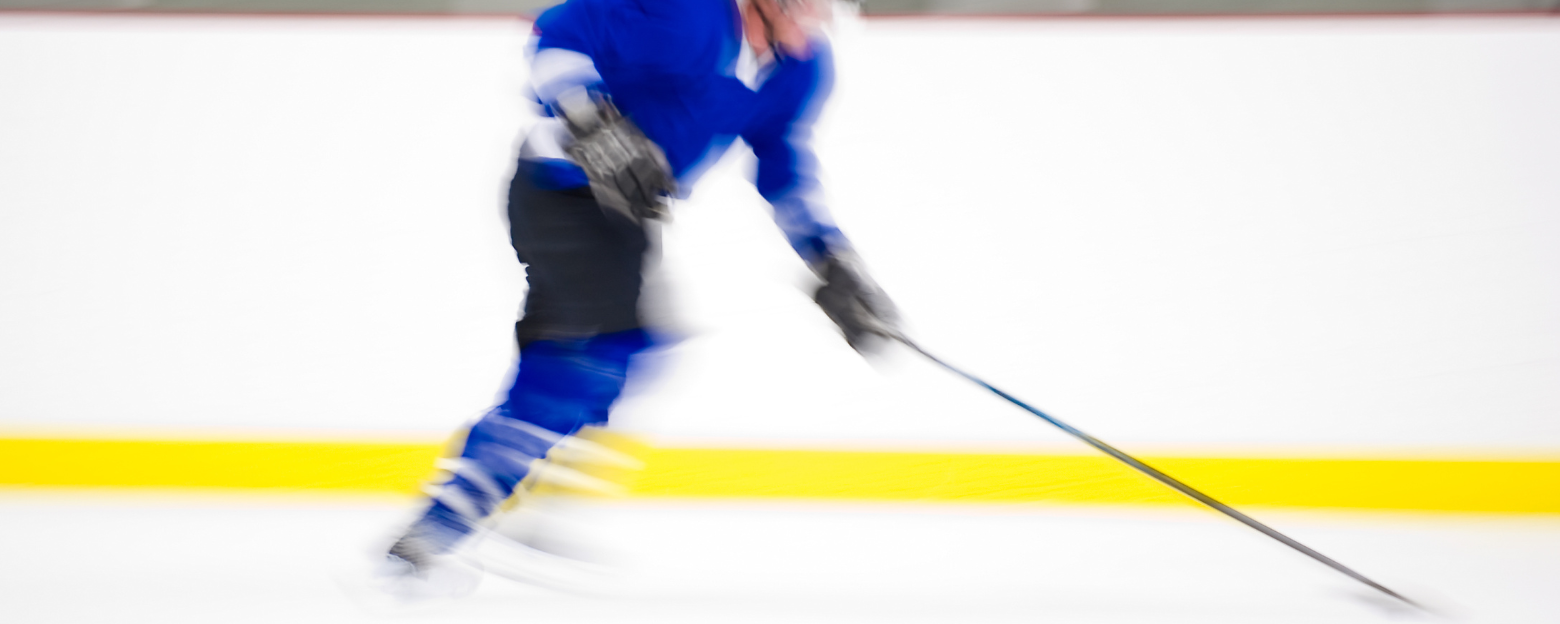
For young hockey players, skatemill training accelerates skill development. It provides a controlled environment for learning essential skating skills early on, giving them a competitive edge as they progress through the ranks.
In the competitive world of hockey, players are continually seeking ways to accelerate their development and gain a competitive edge. Skatemill training has emerged as a powerful tool for propelling hockey players toward their full potential at an accelerated pace. Here’s how skatemill training contributes to accelerated development in hockey players:
Efficient Skill Repetition
One of the key factors that make skatemill training so effective is the opportunity for efficient skill repetition. Unlike traditional on-ice practices, skatemill sessions eliminate downtime spent retrieving pucks or waiting for drills to reset. This allows players to engage in continuous, high-intensity repetitions of essential skills such as skating, shooting, and stickhandling. The more repetitions players complete, the quicker they can fine-tune their techniques and build muscle memory.
Targeted Skill Improvement
Skatemill training provides a structured and controlled environment where players can work on specific skills with precision. Coaches can design training programs tailored to individual players’ needs, focusing on areas that require improvement. Whether it’s refining skating stride, enhancing shooting accuracy, or mastering complex stickhandling maneuvers, skatemill sessions offer targeted skill development. This level of specificity accelerates the learning process by addressing weaknesses and building on strengths.
Consistent Practice
Consistency is key to skill development, and skatemill training offers a consistent and predictable practice environment. Players can train year-round, regardless of weather conditions or ice availability, ensuring that they maintain and improve their skills consistently. This regular practice minimizes skill regression during off-season periods, allowing players to pick up where they left off and make continuous progress.
Immediate Feedback
Skatemill sessions provide immediate feedback to players and coaches. Advanced technology tracks and analyzes performance metrics in real-time, allowing players to assess their strengths and weaknesses instantly. This feedback loop is invaluable for identifying areas that need improvement and making real-time adjustments. With immediate feedback, players can correct errors, refine techniques, and make rapid progress during a single training session.
Muscle Conditioning
Skatemill training engages specific muscle groups essential for hockey performance. The repetitive nature of skating, shooting, and stickhandling on the skatemill strengthens muscles used in these actions. This targeted muscle conditioning accelerates the development of power, speed, and agility required on the ice. As players build strength and endurance, they experience faster improvements in their overall hockey performance.
Simulated Game Scenarios
Skatemill sessions often include simulated game scenarios and situational training. This means players can practice and develop their skills in contexts that mimic real-game situations. Whether it’s executing plays, making quick decisions under pressure, or perfecting defensive strategies, skatemill training allows players to accelerate their development by honing their ability to perform when it matters most.
Personalized Training Plans
Skatemill coaches work closely with players to create personalized training plans. These plans take into account the player’s current skill level, strengths, weaknesses, and goals. By tailoring training to individual needs, coaches can maximize the impact of each session. Players receive customized guidance and drills that address their unique areas for improvement, ensuring accelerated development.
Goal Achievement
Setting and achieving goals is a motivating factor in accelerated development. Skatemill training encourages players to set specific skill-related goals and milestones. As players witness their progress and achieve these goals, they gain confidence and motivation to push themselves further. This goal-oriented approach drives players to work diligently and with purpose, resulting in faster skill development.
Summary
In summary, skatemill training offers a fast track to accelerated development for hockey players. It provides an efficient platform for skill repetition, targeted improvement, and consistent practice. Immediate feedback, muscle conditioning, and simulated game scenarios contribute to rapid skill enhancement. Personalized training plans and goal achievement further fuel players’ dedication to improvement. With skatemill training, players can expedite their development and reach their full potential in the world of hockey.
Conclusion
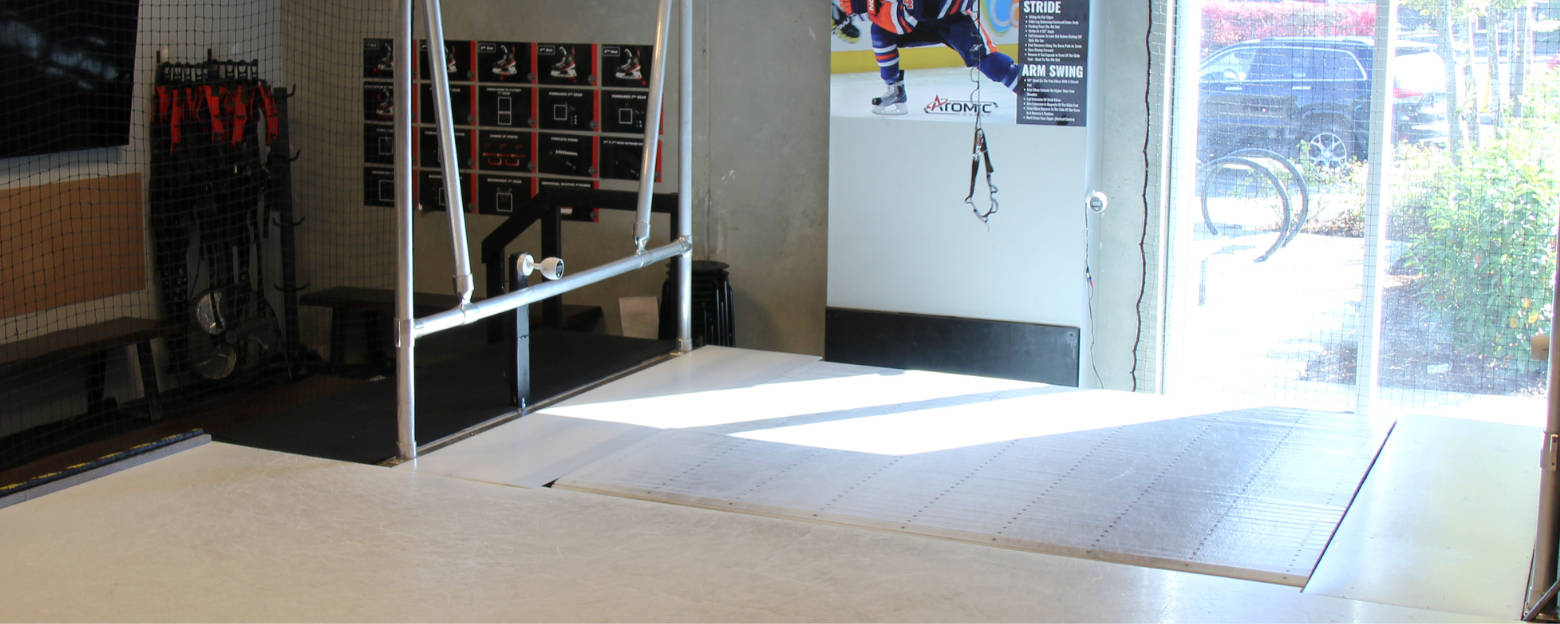
In the fast-paced world of hockey, skatemill training stands as a game-changer, revolutionizing the way players hone their skills and elevate their performance. Throughout this exploration of the benefits of skatemill training, it becomes abundantly clear that this innovative approach offers a multitude of advantages, each contributing to a player’s journey towards excellence on the ice.
Enhanced Skating Technique and Posture: Skatemill training empowers players to perfect their skating technique, ensuring that their posture, knee bend, and body alignment are optimal for agility and speed. With this foundation, they gain the edge in maneuvering on the ice, outpacing opponents, and achieving peak performance.
Greater Endurance: The endurance gained through skatemill training sets players apart. It enables them to maintain their top-level performance throughout the game’s duration, ensuring that they can continue making impactful plays when it matters most.
Improved Speed and Agility: The swiftness and agility honed on the skatemill become potent assets on the ice. Players can navigate tight spaces, execute quick direction changes, and respond swiftly to game dynamics, putting them at a significant advantage.
Injury Prevention: Skatemill training’s focus on technique and muscle conditioning plays a vital role in injury prevention. Players are equipped with the strength and stability needed to protect themselves from common hockey-related injuries, fostering longevity in their careers.
Customized Workouts: Tailored training plans allow players to address their unique needs and goals systematically. This customization ensures that every session contributes directly to their individual development, eliminating wasted efforts and accelerating progress.
Year-Round Training: With skatemill training, there are no off-seasons. Players can maintain and enhance their skills year-round, providing a consistent platform for continuous improvement.
Confidence Boost: As players witness their skills and performance reaching new heights, their confidence soars. This newfound self-assuredness translates into assertive play on the ice, where they become leaders and playmakers.
Accelerated Development: Skatemill training expedites skill development through efficient repetition, targeted improvement, and immediate feedback. Players progress rapidly, reaching their goals faster than ever before.
In summary, whether you’re a budding athlete with dreams of reaching the elite level or a seasoned pro seeking to maintain a competitive edge, skatemill training is your path to success. It has reshaped the landscape of hockey training, offering a comprehensive platform for skill enhancement and performance optimization. With skatemill training, you’re not just chasing dreams; you’re living them on the ice.
So, don your skates, embrace the challenge, and step onto the skatemill—the arena where champions are forged and where your hockey journey ascends to its pinnacle. Get ready to redefine your game and unleash your full potential on the ice with skatemill training. Your hockey future has never looked brighter, and it begins with every stride you take on the skatemill.
It’s time to become the player you’ve always aspired to be. The skatemill is your stage, and the world of hockey awaits your next move.
Frequently Asked Questions
Yes, skatemill training is suitable for players of all skill levels. Beginners can develop a strong foundation, while advanced players can fine-tune their skills.
The frequency of skatemill training sessions depends on your goals and availability. Consult with a coach to create a personalized training schedule.
All of our coaches are Certified Professional Skating Coaches by AKHockey, the leader in Skatemill training and certification.
While skatemill training is beneficial, it complements on-ice practice but does not replace it. Both are essential for well-rounded development.
Skatemill facilities are available at specialized training centers like Atomic Hockey. Visit us at 190-9347 200A Street, Langley.

